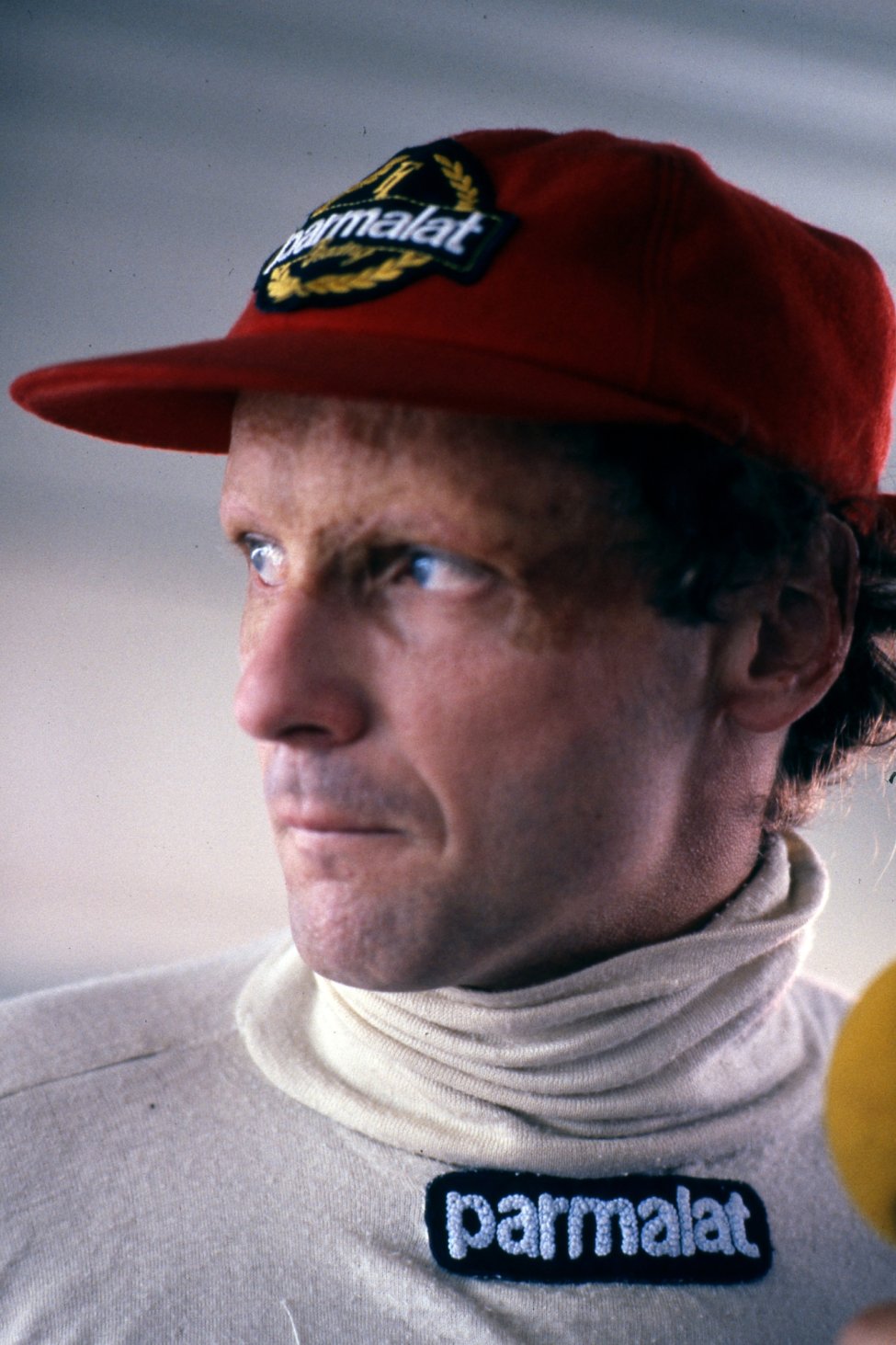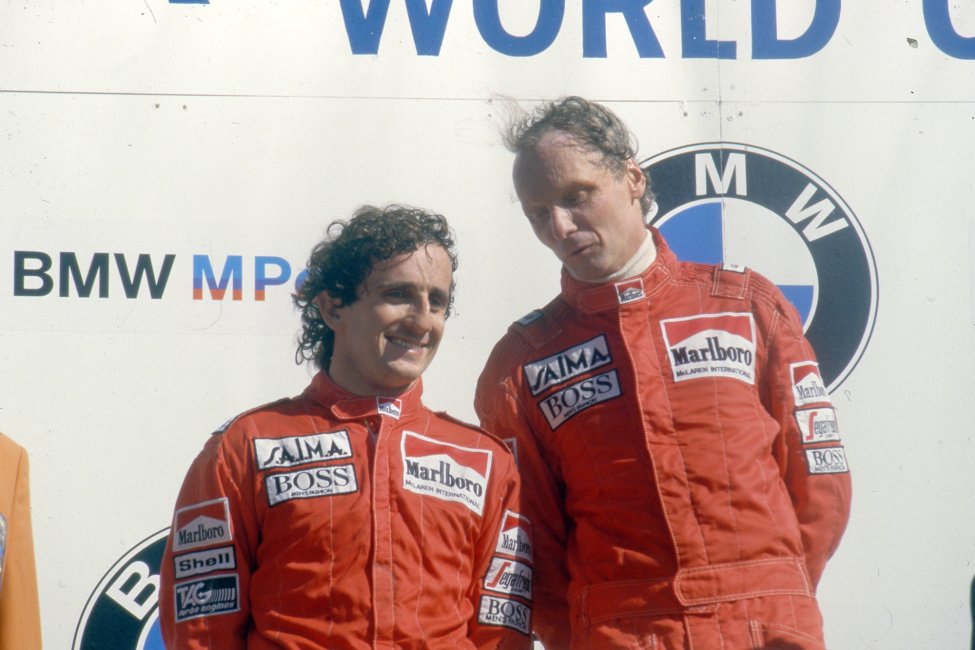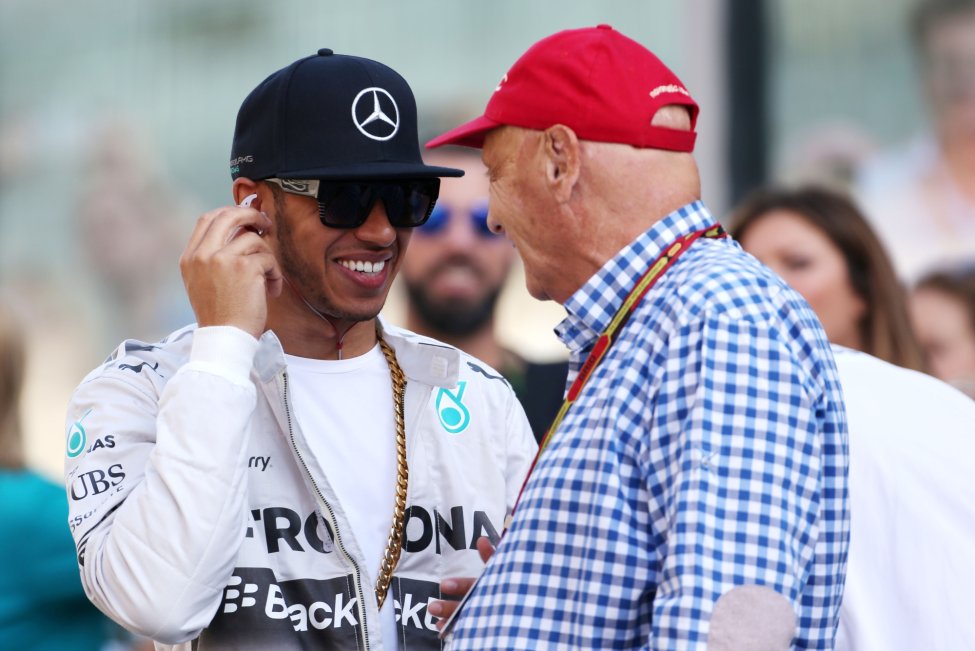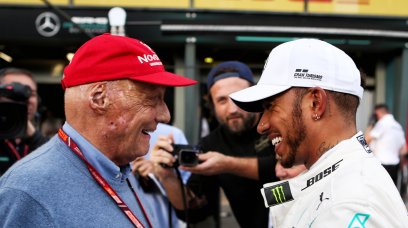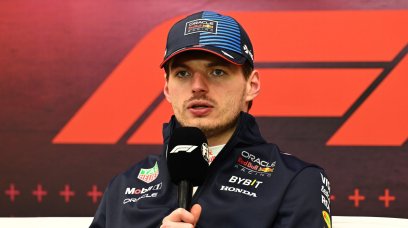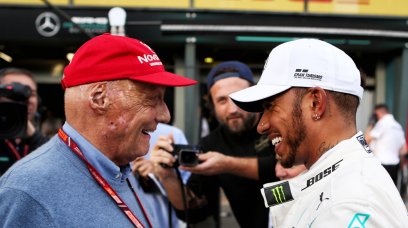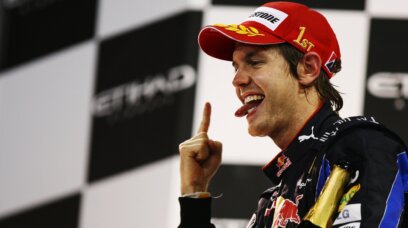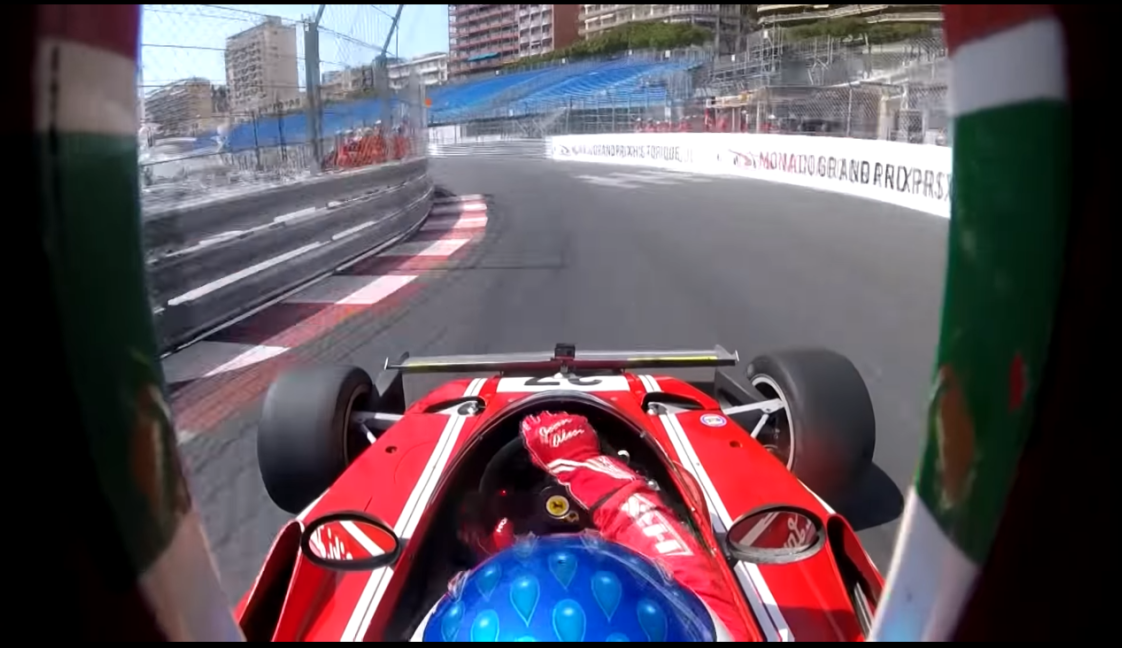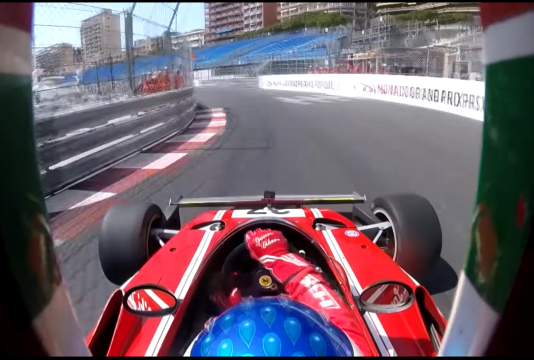Niki Lauda
Niki Lauda is one of the most influential figures in Formula 1 history. The Austrian won three world titles and enjoyed great success on the Mercedes F1 board after his retirement.
F1 career
| World titles | 3 |
| WC points | 420.5 |
| Races | 171 |
| Victories | 25 |
| Podium places | 54 |
| Pole positions | 24 |
Biography of Formula 1 legend Niki Lauda
Andreas Nikolas (Niki) Lauda was born on February 22, 1949 in Vienna, Austria to a wealthy paper-manufacturing family that didn't approve of his interest in racing.
Nevertheless the youngster became a racing driver despite his family's protestations, taking part in Formula Vee before driving Porsche and Chevron sports cars in private. However after his career stalled, Lauda took out a £30,000 bank loan that was secured by a life insurance policy in order to buy his way into the March team as a Formula 2 driver in 1971.
It didn't take long for Lauda to be promoted to the F1 team, driving for March in F1 and F1 in 1972. However the team's 1972 F1 campaign proved disastrous, with the low point coming at the Canadian GP when both cars were disqualified within three laps of each other.
Lauda then took out another bank loan in order to buy his way into the BRM team in 1973. Although the team were in decline the Austrian was quick, running as high as third at the Monaco GP, which caught the eye of Enzo Ferrari. When BRM teammate Clay Regazzoni rejoined Ferrari in 1974, Enzo promptly asked him about the Austrian. Regazzoni spoke highly of Lauda, prompting Ferrari to sign him and clear his debts.
Niki Lauda at Ferrari
After some down years to start the 1970s, Ferrari were once again on the rise in 1974 under the leadership of Luca di Montezemolo. With Regazzoni and Lauda now in the mix, the team started the season well with the Austrian finishing second at his debut race in Argentina.
It didn't take long for Lauda to take his first victory for the team three races later in Spain, Ferrari's first since 1972. The Austrian continued to impress from there, registering six consecutive pole positions at one point, however inexperience and unreliability meant he only won one more race that year, the Dutch GP. As a result Lauda finished the season fourth in the Drivers' Championship.
The start of the 1975 season was a tricky one for Lauda as his best result after the first four races was a fifth-place finish. However from there the Austrian four of the next five races, with his third place finish at the Italian GP helping him clinch his first World Championship. Teammate Clay Regazzoni won the race, helping Ferrari take their first Constructors' Championship in 11 years.
Daniele Audetto replaced Montezemolo as Ferrari team manager in 1976, and despite tension between he and Lauda, the Austrian started the year with four wins from the opening six races while finishing second in the other two. A fifth win of the season at the British GP meant that Lauda had double the points of closest challengers Jody Scheckter and James Hunt, making a second consecutive title all but a formality.
Niki Lauda's crash at the Nurburgring
Ahead of the 1976 German GP at the Nurburgring, Lauda urged his fellow drivers to boycott the event citing the race organisers' lack of safety measures around the 23 kilometre circuit - including a lack of fire marshals, fire and safety equipment and safety vehicles. Although F1 was quite dangerous at the time, drivers voted against the boycott and the race went ahead.
The race took place on August 1, 1976 however things quickly took a turn for the worst. Lauda's Ferrari swerved off track on Lap 2, hitting an embankment and burst into flames while making contact with Brett Lunger's Surtees-Ford car. While Lunger was able to get out, Lauda was trapped with the likes of Arturo Merzario, Lunger, Guy Edwards and Harald Ertl all stopping.
Merzario was able to pull Lauda from his car, though the Italian suffered severe burns to his head and inhaled hot toxic gas while doing so. The Austrian was conscious and able to stand immediately after the accident, though he later fell into a coma and was given his last rites while in hospital.
Lauda survived but suffered scarring from burns to his head. He also lost most of his right ear as well as the hair, eyebrows and eyelids on the right side of his head. Nevertheless Lauda opted for minimal reconstructive surgery, having his eyelids replaced and choosing to wear a cap to cover the scars on his head.
Carlos Reutemann was brought in as his replacement however Lauda only missed two races, even appearing at the Monza press conferences just six weeks after the accident with fresh burns. He managed to finish the race in fourth, however in his absence Hunt had mounted a charge to close the gap in the standings. The Briton took wins in the Canadian and US GP, reducing Lauda's lead to just three points ahead of the season-ending Japanese GP.
While the Austrian managed to qualify third, one spot behind Hunt, torrential rain hit the Fuji Speedway on raceday. This prompted Lauda to retire after two laps, stating he felt it was unsafe to race in those conditions, especially as his eyes were watering excessively due to the injuries suffered from his fiery crash. Hunt led most of the race, and while blistered tyres forced him to stop and dropped him down the order, he eventually finished third to take the F1 World Championship by one point.
Lauda's decision to retire from the Japanese GP hurt his previously good relationship with Ferrari, though he managed to take the 1977 title through consistency rather than outright pace as Mario Andretti won four races compared to the Austrian's three.
Nevertheless Lauda decided to leave Ferrari at the end of the season, having raced alongside Reutemann all year despite the two having a poor relationship. The Austrian even left the team before the end of the season, missing the last two races after Ferrari ran Gilles Villeneuve in a third car for the Canadian GP.
Move to Brabham and first retirement
After leaving Ferrari, Lauda joined Brabham-Alfa Romeo in 1978 though results were less than stellar. One of the high points came at the 1978 Swedish GP when the Austrian took the chequered flag in the Brabham BT46B that featured a radical design known as the Fan Car.
Lauda also took victory at the Italian GP, however he retired from nine of the 14 races. Those issues continued in 1979. Although the Austrian won the non-championship Dino Ferrari GP in September, his final appearance for the team came at the Canadian GP when he cut a practice session short and informed team principal Bernie Ecclestone that he wished to retire immediately. Lauda, who had founded Lauda Air - a charter airline - returned to Austria to run the company full time.
Comeback with McLaren and third F1 World Championship
Lauda made his F1 return in 1982, joining McLaren for a reported salary of $3 million despite scepticism from team sponsor Marlboro. The Austrian wasted no time in proving he still had what it took to compete, winning the Long Beach GP in his third race back. Lauda won the British GP later in the year en route to an impressive fifth place finish in his first season back in the sport.
Although Lauda finished the opening two races of the 1983 season on the podium, McLaren struggled through a transition year as they made the switch from Ford-Cosworth engines to TAG-badged Porsche turbo engines. Although the Austrian came close to winning the final race of the season in South Africa, he ended the campaign without a victory.
However Lauda and McLaren rallied back in 1984, with the Austrian taking his third and final F1 World Championship by half a point over teammate Alain Prost. The two were no match for the rest of the grid, winning 12 of the 16 races with the Frenchman winning seven compared to Lauda's five.
The success was short-lived however as Lauda retired from 11 of the 14 races the following year. He even failed to start the Belgian GP after crashing and breaking his wrist during practice, an injury that forced him to miss the European GP at Brands Hatch as well. His only win of the season, and the final of his career, came at the Dutch GP as he fended off a late push from Prost. Lauda's final race came at the inaugural Australian GP, though he retired while leading on Lap 57 due to brake failure.
Management roles
With his racing career over, Lauda returned to F1 in 1993 when Di Montezemolo offered him a consulting role at Ferrari. He later became team principal of the Jaguar Formula 1 team midway through the 2001 season, however results failed to improve and he was let go along with 70 other key figures at the end of 2002.
Lauda became non-executive chairman of the Mercedes F1 team in September 2012, and his influence proved crucial in signing Lewis Hamilton from McLaren on a three-year contract.
Death and tribute to Niki Lauda
Lauda passed away in his sleep on May 20, 2019 at the age of 70 at the University Hospital of Zurich, where he had been undergoing dialysis treatment for kidney problems.
Current and former drivers paid tribute to the Austrian in the lead up to the 2019 Monaco GP and a moment of silence was held before the race. Mercedes painted their halo red with a sticker stating "Niki we miss you". Both Lewis Hamilton and Sebastian Vettel wore special helmets in honour of the Austrian.
Niki Lauda's wife
Niki Lauda was married twice. His first marriage was in 1976 to Marlene Knaus, a fashion icon, model, and former socialite. The couple had two children, Mathias and Lukas, and remained married until their divorce in 1991. However, during their marriage, Niki had a son named Christoph with another woman. The affair eventually led to the end of their 15-year marriage. In 2008, Niki married again to Birgit Wetzinger, a former flight attendant who is 30 years younger than Lauda. They welcomed twins, a son named Max and a daughter named Mia, a year after their wedding.
Charles Leclerc in Niki Lauda's Ferrari
On May 15, 2022, Charles Leclerc took part in a demonstration in the legendary Ferrari 312B, one of Niki Lauda's cars. This was during the Historic Grand Prix in Monaco. During the demo, the brakes failed and Leclerc crashed into the wall. Read more about the incident here.
Don't miss out on any of the Formula 1 action thanks to this handy 2026 F1 calendar that can be easily loaded into your smartphone or PC.
Download the calender